So, you’re thinking about welcoming a Ragdoll Ragdoll Cat into your home and wondering if this breed is the right fit for you. With their captivating blue eyes, adorable faces, and laid-back personalities, it’s easy to see the allure of the Ragdoll cat breed. After living with my two Ragdolls, Teemo and Arya, for three wonderful years, I want to share 10 essential things you should know before bringing a Ragdoll cat into your life.
 Cream bicolor Ragdoll cats, Teemo and Arya, lying together on a bed.
Cream bicolor Ragdoll cats, Teemo and Arya, lying together on a bed.
Teemo and Arya, my cream bicolor Ragdoll companions, embodying the gentle nature of the breed.
1. The Original Floppy Cats
The name “Ragdoll” perfectly describes this breed’s defining characteristic: their tendency to go completely limp and relaxed when held. This “floppy” nature is a hallmark of Ragdoll cats, earning them the affectionate nickname “floppy cats”. They genuinely enjoy being carried and cuddled, much like a rag doll. These masters of chill truly thrive on attention and affection, melting into your arms when cradled. While most Ragdoll cats exhibit this endearing floppy trait, it’s worth noting that not every individual cat may display it to the same degree.
2. Puppy-Like Personality in a Cat
Ragdolls are renowned for their docile, gentle, and sweet temperaments, often described as having a “puppy-like personality”. They form strong bonds with their families and crave companionship, often following their owners from room to room. Much like dogs, Ragdoll cats are known to greet you at the door, seek out lap snuggles when you’re relaxing, and are always up for a cuddle session. Their affectionate nature and desire to be close to people make them wonderful companions for children and they typically get along well with other pets in the household. Some Ragdoll cats even enjoy playing fetch, further cementing their dog-like charm.
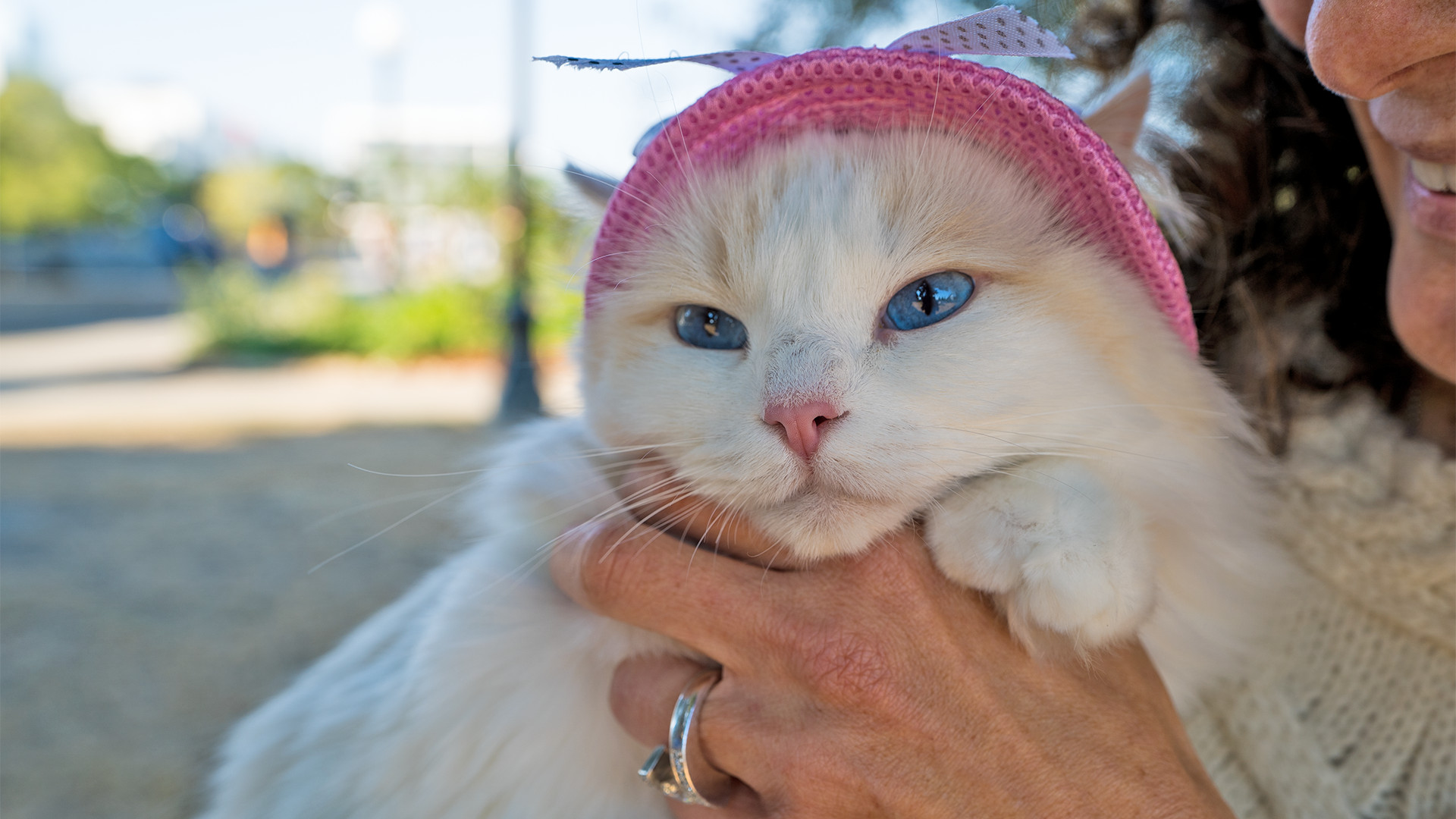 Cream bicolor Ragdoll cat, Olivia, wearing a small hat and looking directly at the camera.
Cream bicolor Ragdoll cat, Olivia, wearing a small hat and looking directly at the camera.
Olivia, a cream bicolor Ragdoll, showcasing the breed’s captivating eyes and gentle expression.
3. Striking Physical Appearance
When it comes to looks, purebred Ragdoll cats are undeniably stunning. Breed standards dictate that all true Ragdolls possess captivating blue eyes. Their coats are another defining feature, coming in four main patterns: bicolor, van, mitted, and colorpoint. These patterns are further diversified by six main colors: seal, blue, chocolate, lilac, red, and cream. Interestingly, all Ragdoll kittens are born completely white, with their color gradually developing and becoming clearly visible by 8 to 12 weeks of age. Adding to their plush appearance, the Ragdoll coat is semi-long, silky, and incredibly soft to the touch.
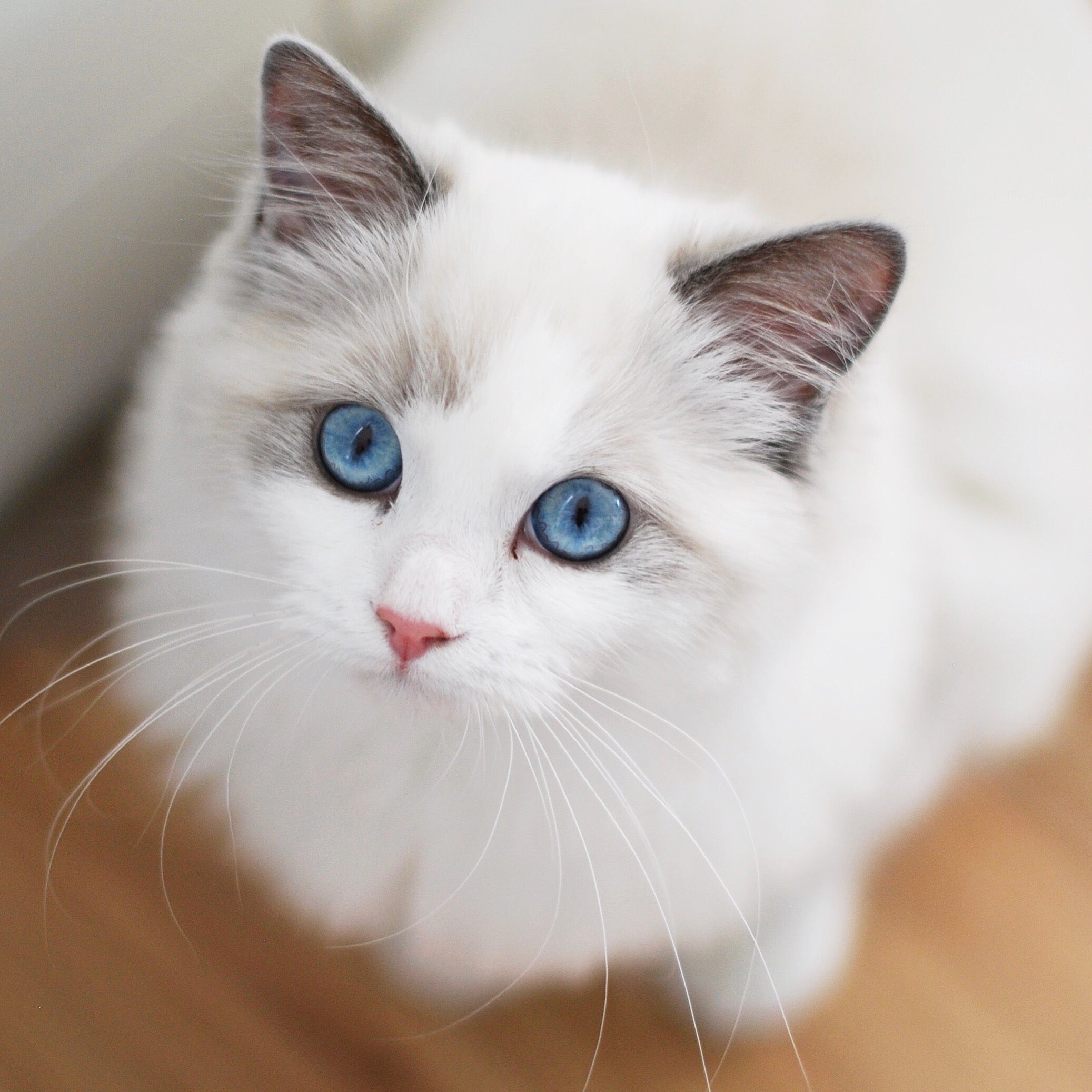 Blue bicolor Ragdoll cat standing in a grassy area, showcasing its blue eyes and color pattern.
Blue bicolor Ragdoll cat standing in a grassy area, showcasing its blue eyes and color pattern.
A blue bicolor Ragdoll cat exhibiting the breed’s characteristic pattern and vibrant blue eyes.
4. Long and Fulfilling Lifespan
Ragdoll cats are known for their longevity, offering many years of companionship. On average, the lifespan of a Ragdoll cat ranges from 15 to 20 years. Several factors can contribute to a longer and healthier life for your Ragdoll, including feeding a high-quality diet, ideally incorporating raw meat, keeping them as indoor cats to minimize risks, neutering or spaying, and ensuring they receive excellent veterinary care throughout their lives. Some Ragdoll cats have even been known to live up to the remarkable age of 25. It’s also worth noting that Ragdolls are a slow-maturing breed, typically reaching their full adult size and maturity around 4 years old.
5. Understanding Hypertrophic Cardiomyopathy (HCM)
Hypertrophic cardiomyopathy, or HCM, is the most prevalent cardiac disease in cats overall, and it’s a health concern to be aware of with Ragdoll cats. HCM involves the thickening of the heart muscle, reducing the heart’s efficiency and potentially leading to sudden cardiac death. In Ragdolls, HCM is often an inherited condition due to specific genetic mutations within the breed. These mutations significantly increase a Ragdoll cat’s predisposition to developing hypertrophic cardiomyopathy. To mitigate the risk of HCM, it’s crucial to choose a reputable breeder who screens their Ragdoll kittens for the HCM mutation and provides a guarantee that your kitten will be HCM negative. This proactive approach is vital for ensuring the long-term health of your Ragdoll cat.
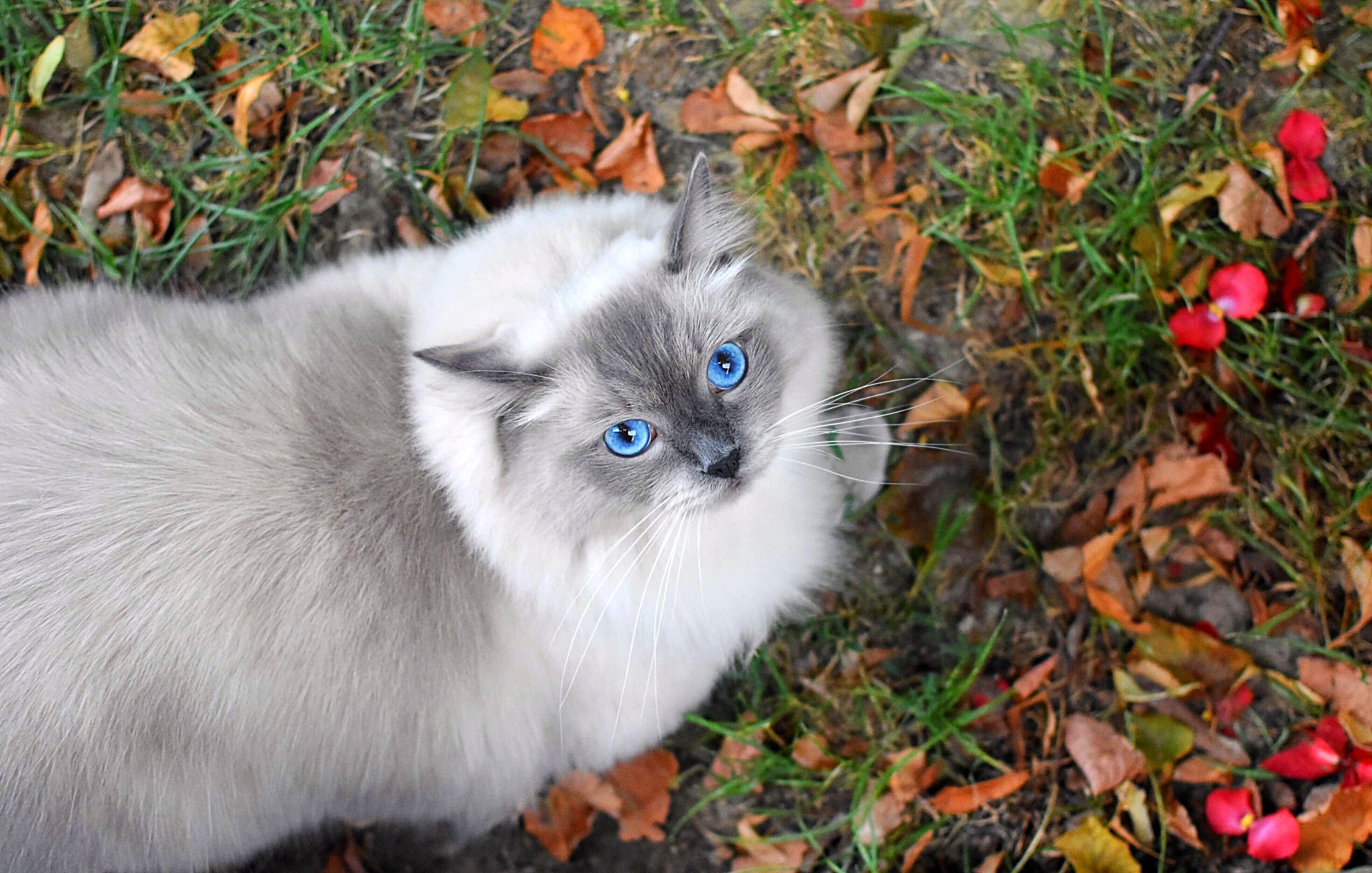 Blue mitted Ragdoll cat with white paws sitting on a neutral surface.
Blue mitted Ragdoll cat with white paws sitting on a neutral surface.
A blue mitted Ragdoll cat, highlighting the distinctive “mitted” pattern with white paws.
6. They Thrive on Companionship and Dislike Being Alone
Ragdoll cats are inherently social creatures and do not enjoy solitude. They require significantly more attention and interaction than some other cat breeds. If you are frequently away from home for extended periods, consider providing your Ragdoll with a companion. Having another cat or a friendly dog can ensure your Ragdoll cat doesn’t become lonely when you are occupied, such as during work hours or while you sleep. This companionship allows both you and your feline friend to enjoy life more fully, preventing feelings of neglect or excessive neediness. A lonely Ragdoll cat may exhibit destructive behaviors like scratching furniture or knocking items over due to boredom and anxiety. Providing a scratching post can help redirect their scratching instincts to appropriate outlets.
 Tall beige cat scratching post with multiple levels and a condo.
Tall beige cat scratching post with multiple levels and a condo.
Bringing home Teemo and Arya, who are from the same litter, was the best decision I made as a cat parent. Seeing them cuddle, play fight, and engage in playful games of hide-and-seek is a constant source of joy.
7. Large and Lovable Breed
Ragdoll cats are classified as a large cat breed. A fully grown male Ragdoll cat can weigh up to 20 pounds, while females typically range from 8 to 15 pounds. Despite their imposing size, Ragdolls lack the strong hunting instincts found in many other cat breeds and are not naturally adept at self-defense. Therefore, it’s crucial to keep them indoors, especially when you’re not home, to protect them from potential threats like stray dogs or cats. Their substantial size, however, contributes to their exceptional cuddliness and teddy-bear-like appeal. They are wonderfully suited for holding and snuggling. When picking up a Ragdoll, remember to use both hands to provide adequate support for their weight. Their larger size also necessitates a larger litter box and bed to ensure they have ample space and comfort. Creating a living environment tailored to a larger cat, such as providing a spacious cat cave, is essential.
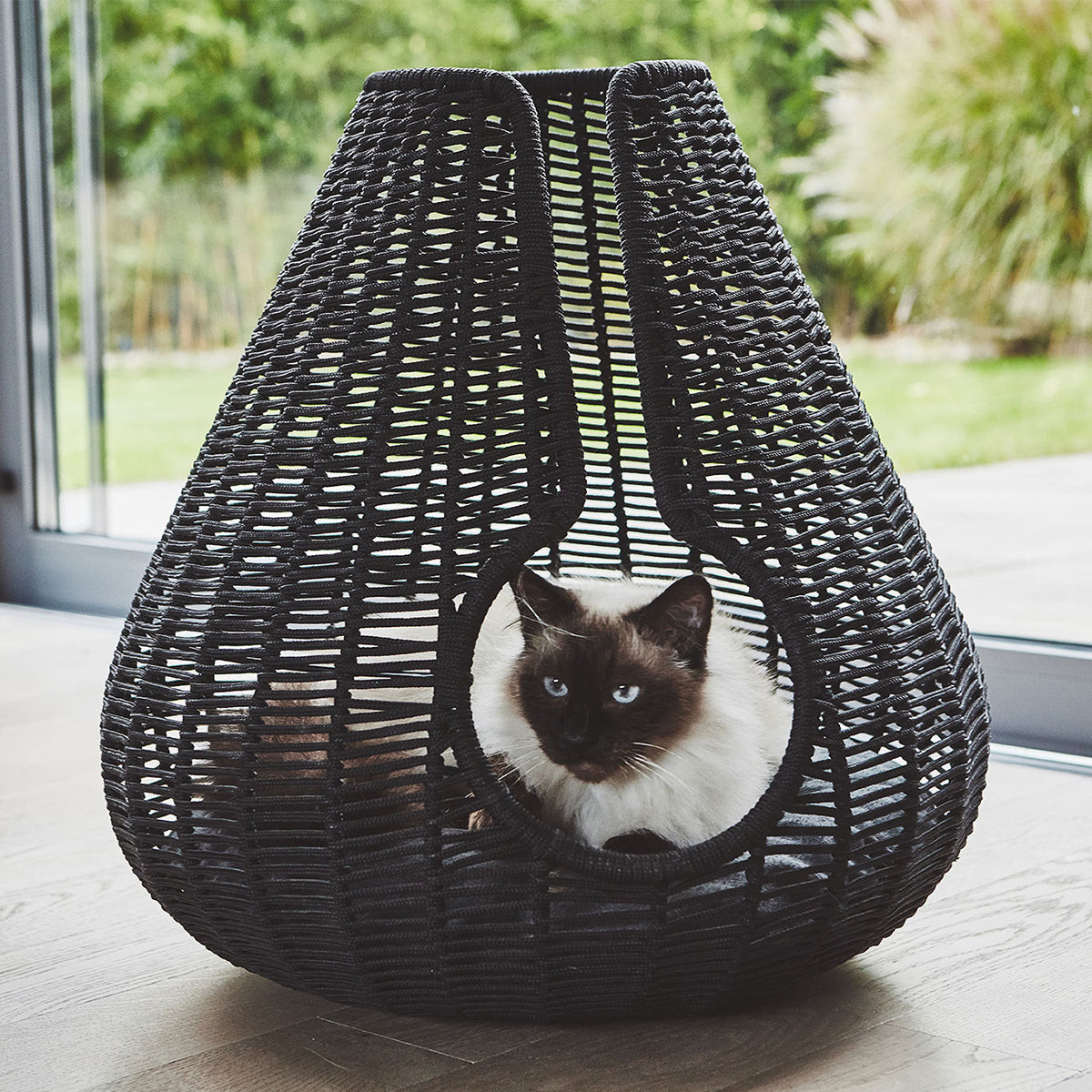 Beige felt cat cave bed with a round opening.
Beige felt cat cave bed with a round opening.
8. Moderate Shedding and Grooming Needs
As a long-haired breed, Ragdoll cats do shed, so expect some degree of hair around your home. The amount of shedding can fluctuate based on temperature, season, and their diet. Ragdolls typically develop a thicker coat during the winter months, which they then shed in the spring. Regular grooming is necessary to help manage shedding, prevent tangles and mats from forming in their coat, and reduce excessive hair around your house. Fortunately, most Ragdoll cats enjoy the bonding experience of grooming sessions. I personally brush my Ragdolls daily.
9. Not Truly Hypoallergenic
For individuals with allergies, it’s important to know that Ragdoll cats are not considered hypoallergenic. While they lack a dense undercoat, which can sometimes reduce dander-related allergies, the primary allergen for most people is cat saliva. Cats groom themselves by licking their fur, spreading saliva across their coat. This saliva-coated hair is then shed and dispersed throughout the home, triggering allergic reactions in sensitive individuals.
10. Cost of Owning a Ragdoll
A purebred Ragdoll cat comes with a significant price tag. In the United States, Ragdoll kittens from reputable breeders registered with organizations like TICA can range from $1,500 to $3,500 or even higher, depending on factors like lineage, quality, and pattern. When researching purebred cats, you may encounter terms like “pet quality” and “show quality.” A show quality cat is one that closely adheres to the breed standard and possesses an exceptional temperament, making them suitable for cat shows. Pet quality cats may have minor cosmetic imperfections, such as slightly misaligned markings, but are still purebred Ragdolls. Show quality Ragdoll cats typically command a higher price than pet quality kittens. Within patterns, the classic bicolor pattern can sometimes also influence the cost, potentially being more expensive. Educating yourself thoroughly about the Ragdoll breed is a crucial step in responsible pet ownership and protecting yourself from unethical breeders. Responsible and ethical Ragdoll breeding requires considerable time, resources, and dedication, so be wary of kittens priced significantly lower than the average, as this could be a red flag. It’s always best to avoid backyard breeders and prioritize reputable sources. I hope this information has helped you better understand the Ragdoll breed and make an informed decision.
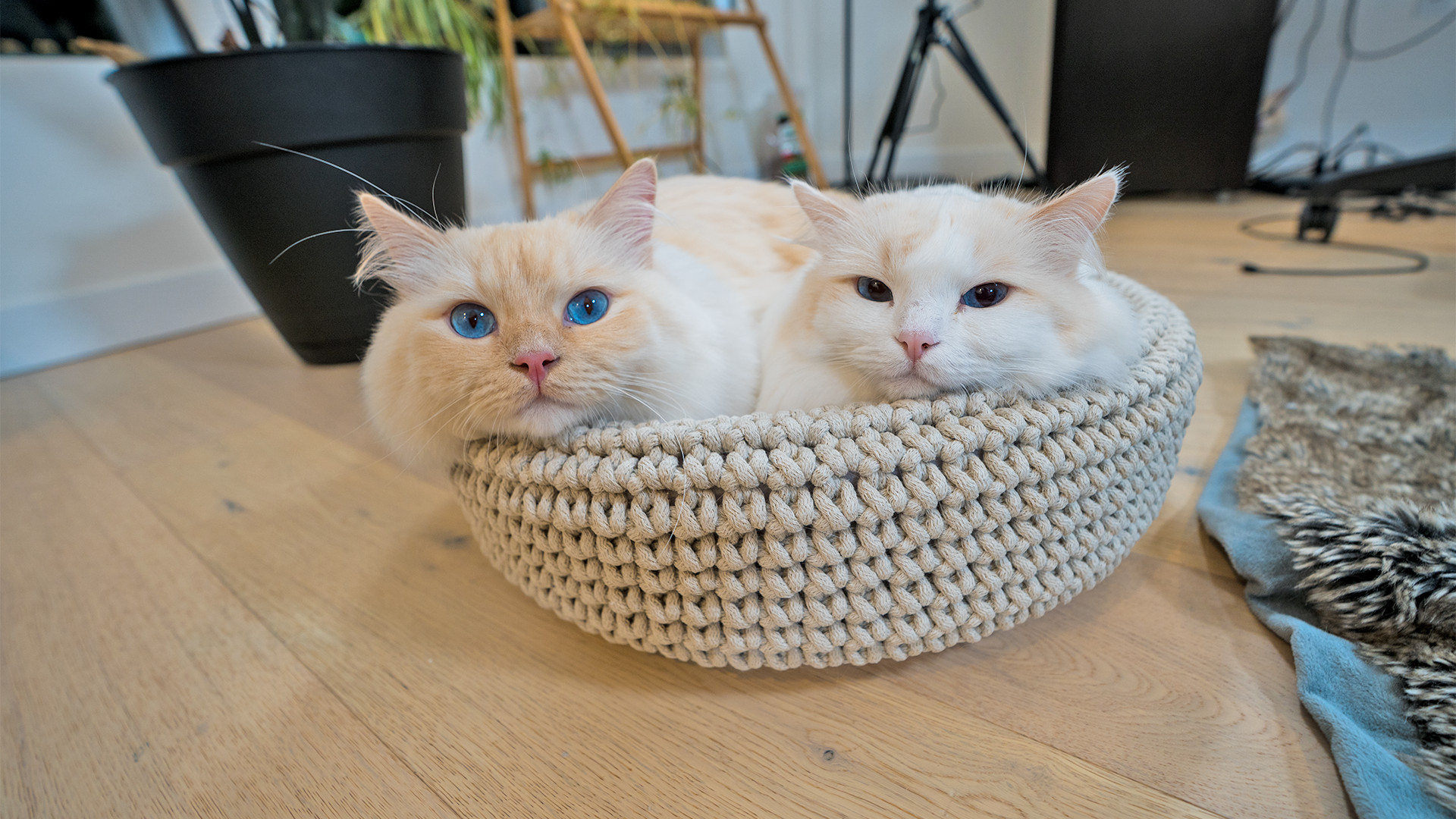 Two cream Ragdoll cats, Harvey and Olivia, curled up together in a round cat bed.
Two cream Ragdoll cats, Harvey and Olivia, curled up together in a round cat bed.
Harvey and Olivia, cream Ragdoll siblings, enjoying a comfortable Coco Cat Bed.
